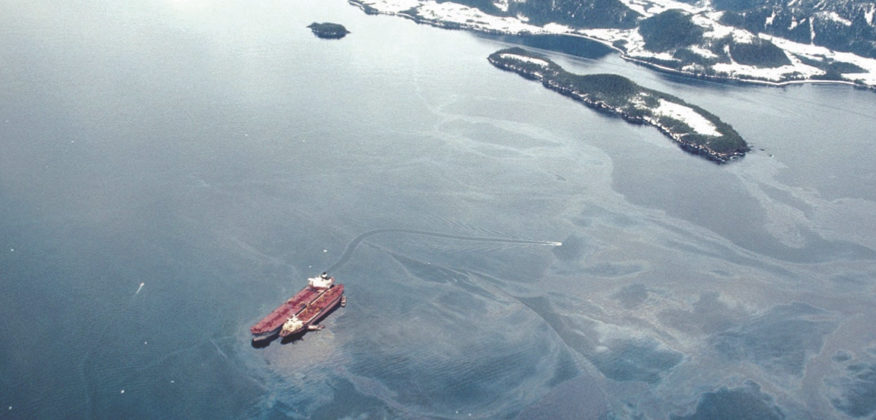Thirty years after the Exxon Valdez ran aground in Alaska’s Prince William Sound, the region is still recovering
Like many companies back in the day, Exxon Shipping would send out annual calendars to promote the brand. The calendars featured photos of recently built or newly painted tankers steaming serenely along in a sea of tranquility.
Not only is the 1989 Exxon Shipping calendar a classic example of the form, it also includes company admonishments like “TAKE TIME TO BE CAREFUL — NOW,” which just happens to be the tag line for March. And the photogenic tanker of the month is, of course, the Exxon Valdez.
You’ll remember that it was this same single-hull tanker that so famously ran aground in Alaska’s Prince William Sound shortly after midnight on Good Friday, March 24, 1989.
Unfortunately, Captain Joseph Hazelwood, skipper of the Exxon Valdez, did not take time to be careful, nor did his employer, Exxon Shipping.

This story was first published in the March issue of National Fisherman. Subscribe today for digital and print access.
One of the things that Hazelwood wasn’t careful with was alcohol. His drinking had already resulted in a DUI and a revoked driver’s license. And he had recently spent a month in rehab. Then on a late winter’s day in Alaska, he found himself with some free time in a coastal town with cozy bars. He liked vodka on the rocks.
Once back onboard and underway outbound, Hazelwood must have thought he was being careful when he decided to divert his fully laden tanker (54 million gallons) from the outbound traffic lane just past Valdez Narrows in order to avoid small icebergs. He dutifully checked with the Coast Guard about any incoming vessels that might be a problem and got an all clear. But when he departed the bridge shortly after dropping off the outbound pilot, leaving only the third mate on watch in the wheelhouse (along with a helmsman), he not only wasn’t being careful, he also violated the company’s safety policy. Ironically, Hazelwood had received awards in the two most recent years for safety excellence.
After he left the bridge, he returned to his stateroom, leaving the third mate to drive the ship — directly into Bligh Reef. The rocks ripped an enormous gash in the side of the ship, rupturing 8 of 11 cargo tanks. Ungodly amounts of crude oil from the North Slope of Alaska started pouring into Alaska’s Prince William Sound. Before the bleeding stopped, at least 11 million gallons and as much as 30 million gallons — the total is disputed — spilled into the sound.
What followed is still being analyzed, adjudicated, argued over and written about 30 years later.
Fishing for a response
Nobody had cell phones or Internet in 1989, so Scott Gordon learned about the accident from newspaper headlines in Anchorage, near where he lived. His shrimp boat, the Early Times, was in Whittier, on the west side of Prince William Sound. His gear was in the water, and he was making calls to his customers in Anchorage. Everyone was asking him about what happened.
“Every single one asked if this oil spill was going to affect me, and my answer was no,” Gordon said. “I was totally naive.
“So I told the crew we were going to go take a look. We pulled gear all night and used the daytime to go over there and ended up getting a job. And I didn’t get back for six months.”
To read the full article, subscribe to National Fisherman today for digital and print access.







